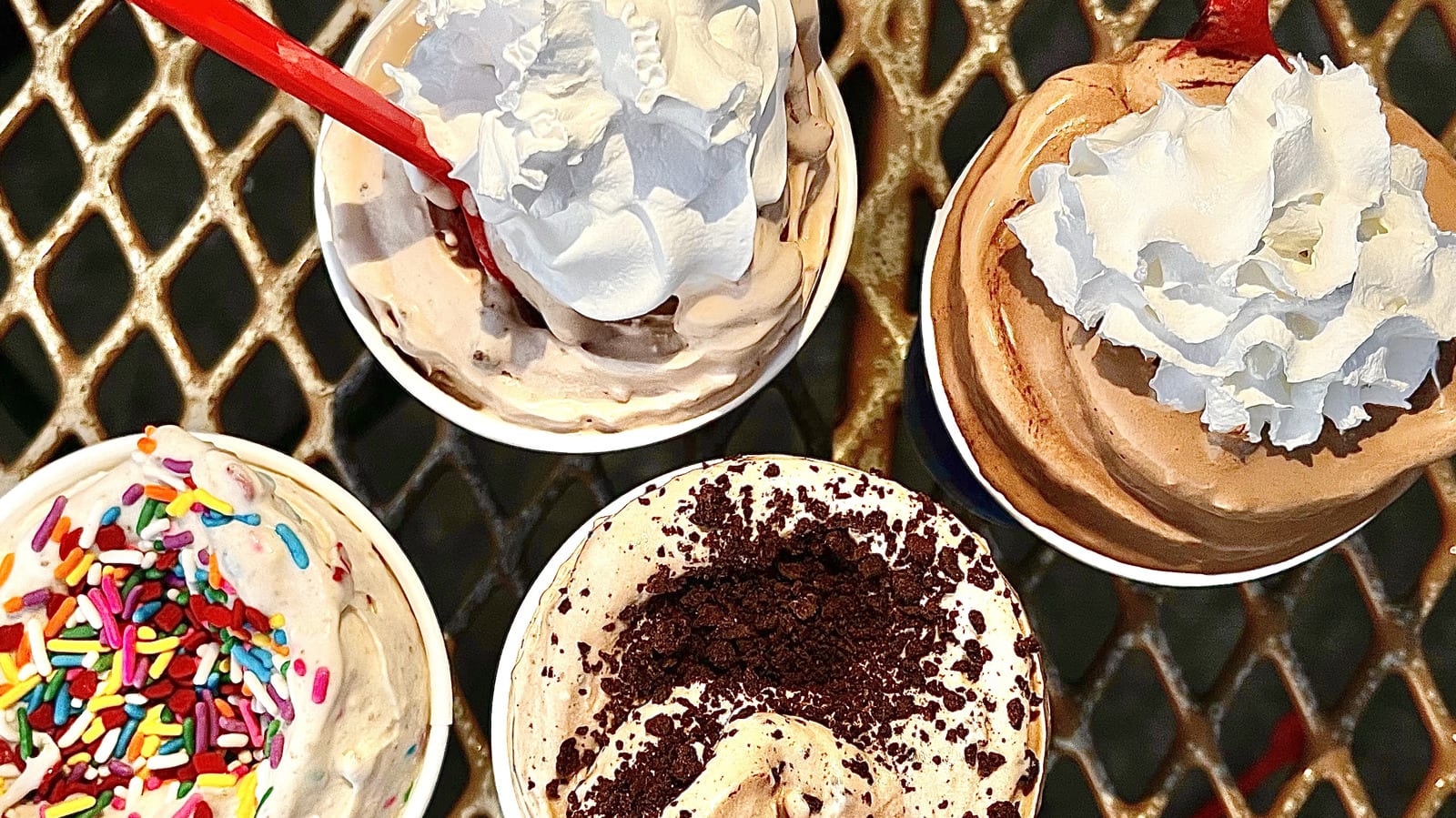American Dairy Queen Corporation (“Dairy Queen”) sued W.B. Mason Co. (“W.B. Mason”) over W.B. Mason’s use of the BLIZZARD mark for its bottled spring water. Dairy Queen holds registered trademarks for its BLIZZARD frozen treats, which it sells directly to consumers. Dairy Queen’s earliest BLIZZARD trademark registration was issued in 1952, and the most recent in 2003. W.B. Mason sells paper and other office supplies, as well as breakroom coffee products, to businesses, but it does not sell directly to consumers. W.B. Mason owns two trademark registrations for its BLIZZARD white copy paper. In 2010, W.B. Mason began selling bottled BLIZZARD branded spring water, solely to businesses, not consumers. In 2016, W.B. Mason filed trademark applications for “BLIZZARD SPRING WATER” and “WHO BUT MASON’S BOTTLED SPRING WATER,” with the United States Trademark and Patent Office (“USPTO”). Dairy Queen opposed W.B. Mason’s trademark applications and sent W.B. Mason a cease-and-desist letter.
In March 2018, Dairy Queen commenced a lawsuit against W.B. Mason in the United States District Court for the District of Minnesota setting forth claims of trademark infringement and false designation of origin. Dairy Queen argued that W.B’s BLIZZARD Spring Water was likely to cause confusion in the market with its BLIZZARD frozen treats. Dairy Queen also asserted a claim for trademark dilution and Minnesota state common law claims of unfair competition and deceptive trade practices.
On July 14, 2022, Judge Susan Richard Nelson, who presided over the trial, issued her decision awarding judgment in favor of W.B. Mason on all claims. Below we discuss certain aspects of the case, and highlight the importance of selecting a strong mark and policing this mark in order to maintain continuous federal statutory trademark rights.
Federal Trademark Infringement and False Designation Claims
Pursuant to the Lanham Act, a registered trademark owner may file a civil suit against anyone who, without consent, “use[s] in commerce any reproduction, counterfeit, copy, or colorable imitation of a registered mark in connection with the sale, offering for sale, distribution, or advertising of any goods or services on or in connection with which such use is likely to cause confusion, or to cause mistake, or to deceive.” 15 U.S.C. § 1114(1)(a). To prevail, one must prove that “it has ownership or rights in the trademark and that the defendant has used the mark in connection with goods or services in a manner likely to cause consumer confusion as to the source or sponsorship of the goods or services.” The same requirement exists for a claim of unfair competition by false destination of origin.
The Court evaluated the likelihood of confusion by using a multi-factor test known as the SquirtCo factors, which include: 1) the strength of the plaintiff’s mark; 2) the similarity between the plaintiff’s and defendant’s marks; 3) the degree to which the allegedly infringing product competes with the plaintiff’s goods; 4) the alleged infringer’s intent to confuse the public; 5) the degree of care reasonably expected of potential customers, and 6) evidence of actual confusion.
The Court engaged in a well thought out analysis of each of the factors as applied to the facts presented in the case. In this blog, we focus on that portion of the Court’s decision involving the strength of Dairy Queen’s BLIZZARD mark, which consists of two parts, conceptual and commercial strength.
Concerning the commercial strength of the Dairy Queen BLIZZARD mark, the Court found that expert testimony and survey evidence supported a finding that the mark was commercially strong. However, as to the conceptual strength of the mark, the Court took a different turn. The conceptual strength was evaluated according to whether the mark is generic, descriptive, suggestive, or arbitrary and fanciful.
The Court explained that although the Dairy Queen BLIZZARD mark was suggestive and had the status of incontestability (read more about incontestability here), those two factors did not resolve the issue of conceptual strength because “the frequency of prior use of [a mark’s text] in other marks, particularly in the same field of merchandise or service, illustrates the mark’s lack of conceptual strength.”
W.B. Mason’s evidence of third-party use of the BLIZZARD mark included a report that noted 70 third-party uses of the word BLIZZARD, trial testimony by nine (9) third parties that are using the BLIZZARD name in its marks, including two that were in the consumable categories, Disney’s Blizzard Beach, which sells a Blizzard Burger and Blizzard Margarita, and Blizzard Wines. In addition, evidence was presented concerning Blizzard Entertainment, which is a multibillion-dollar company that sells video games and related merchandise. Although not in the consumables space, the Court found that Blizzard Entertainment’s use of the BLIZZARD name was not inconsequential.
Ultimately, the Judge found that “while Dairy Queen’s BLIZZARD® mark meets several indicia of strength, its overall strength is weakened to a degree by third-party use, finding that Dairy Queen’s BLIZZARD mark enjoys a moderate overall strength.”
As to the other SquirtCo factors, the Court explained that the evidence weighed in favor of W.B. Mason on all but one: the degree of care of potential consumers, which the Court found did not support or refute a likelihood of confusion. As such, the Court ultimately issued judgment in favor of W.B. Mason on the counts of trademark infringement and unfair competition by false designation of origin.
Trademark Dilution by Blurring
Under the Trademark Dilution Revision Act (“TDRA”), the owner of a famous and distinctive mark may obtain injunctive relief for third-party dilution of its mark. (Read our blog discussing what constitutes a famous mark here). The Court explained that dilution occurs when consumers associate a famous mark with a new and different source. In addition to proving that the mark is famous and distinctive, the mark holder must establish that dilution has in fact occurred. Dilution can be proven by direct evidence (such as consumer surveys) and circumstantial evidence including, but not limited to: (1) the degree of similarity between the two marks; (2) the distinctiveness of the famous mark; (3) the exclusivity of the famous mark; (4) how recognizable the famous mark is; (5) the intent of the user of the allegedly diluting mark; and (6) the existence of any actual association between the famous mark and the allegedly diluting mark. The Court will also consider whether the famous mark’s distinctiveness will be impaired by the other mark.
Here, the Court engaged in another well thought out analysis of the above factors. However, in this blog we will focus on the exclusivity and distinctiveness of Dairy Queen’s BLIZZARD mark and the effect of third-party usage thereon.
Dairy Queen’s BLIZZARD mark has been registered with the USPTO for over 70 years, and, as such, enjoys a presumption of distinctiveness. As for exclusive use of the mark, the Court held that under TDRA, a plaintiff must prove “substantially exclusive use,” not exclusive use. The Court looked at Dairy Queen’s enforcement efforts when analyzing this factor. Dairy Queen submitted evidence establishing that it had addressed 109 instances of trademark infringement, with 105 resolved satisfactorily.
Notwithstanding the forgoing, W.B. Mason argued that continued widespread use of the BLIZZARD mark was evidence that Dairy Queen had not maintained substantially exclusive use. The Court pointed out that “[a] crowded field of identical or similar third-party uses of the plaintiff’s mark can militate against finding that the senior user is not engaging in substantially exclusive use of that mark.” Referring to its third-party use analysis for the trademark infringement claim, the Court found that Dairy Queen did not have substantially exclusive use of the BLIZZARD mark. The Court specifically pointed to the commercial success of Blizzard Wines and Disney’s Blizzard Beach, both in the consumables category, as well as Blizzard Entertainment, which is selling goods with “phenomenal success.”
As to the rest of the Court’s analysis, the Court found that Dairy Queen “enjoys a high degree of recognition among the consuming public.” However, the evidence did not show that W.B. Mason intended to create an association between the two marks; there was no evidence of an actual association between Dairy Queen’s BLIZZARD mark and W.B. Mason’s BLIZZARD marks; and Dairy Queen failed to demonstrate “a likelihood of impairment of its mark’s distinctiveness.” As the balance of factors weighed against a finding of dilution by blurring, the Court entered judgment in favor of W.B. Mason on this cause of action.
Protect Your Mark from Trademark Infringement
While the Court’s decision is lengthy, it is certainly worth reading for the Judge’s thorough trademark law analysis. An important takeaway from the decision is the negative impact third-party use of a mark can have on the continued strength of a registered trademark.
How do you protect against third-party use of your marks? For starters, choose a strong mark, one that is arbitrary or fanciful, and avoid common words that other businesses may incorporate in their brand names. Second, police your marks to oppose third-party applications which infringe upon your trademark rights, including by: 1) monitoring the USPTO’s Official Gazette; and 2) keeping a look out for infringing use on the Internet and social media.
If you need assistance with protecting against trademark infringement or require legal counsel in connection with formulating a brand strategy, please email us at info@kleinmoynihan.com, or call us at (212) 246-0900.
The material contained herein is provided for informational purposes only and is not legal advice, nor is it a substitute for obtaining legal advice from an attorney. Each situation is unique, and you should not act or rely on any information contained herein without seeking the advice of an experienced attorney.
Attorney Advertising
Related Blog Posts
A Trademark Lawyer Can Guide You To Obtaining A Strong Trademark
Trademark Infringement: Kiss of Death?
TTAB Trademark Decision Finds No Confusion Between CHINOOKR’D IPA And CHINOOK Wine




